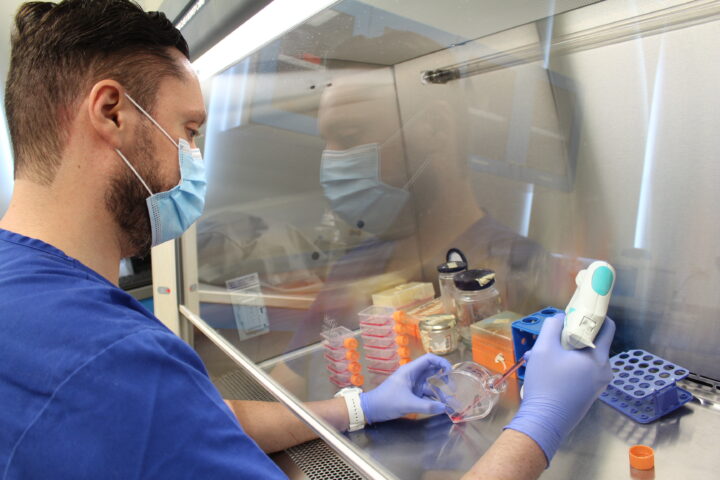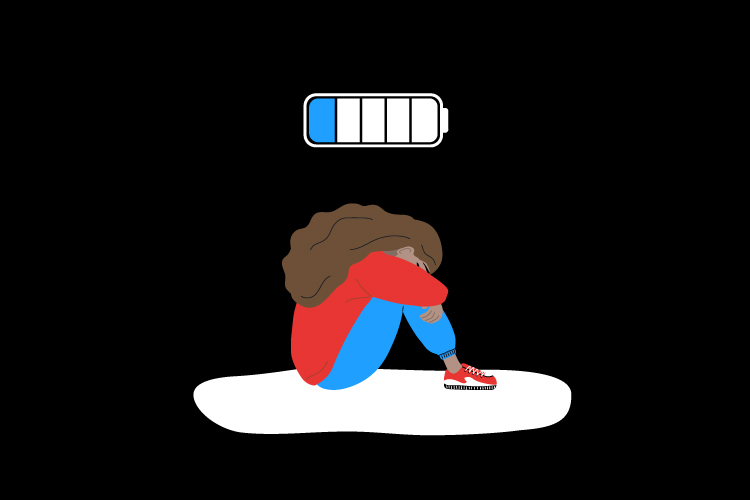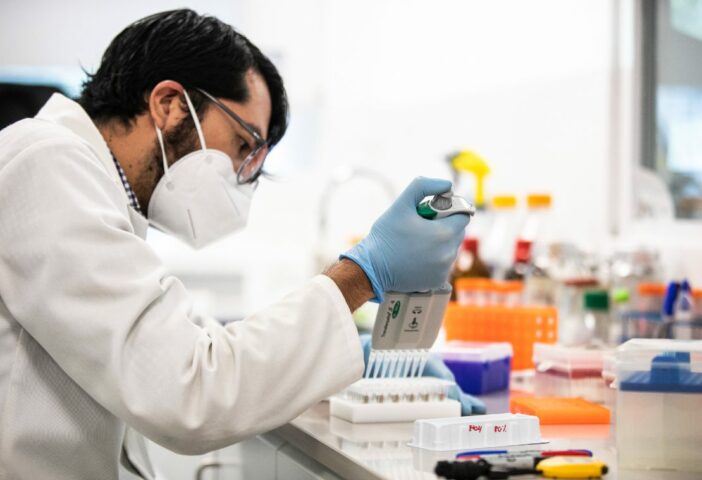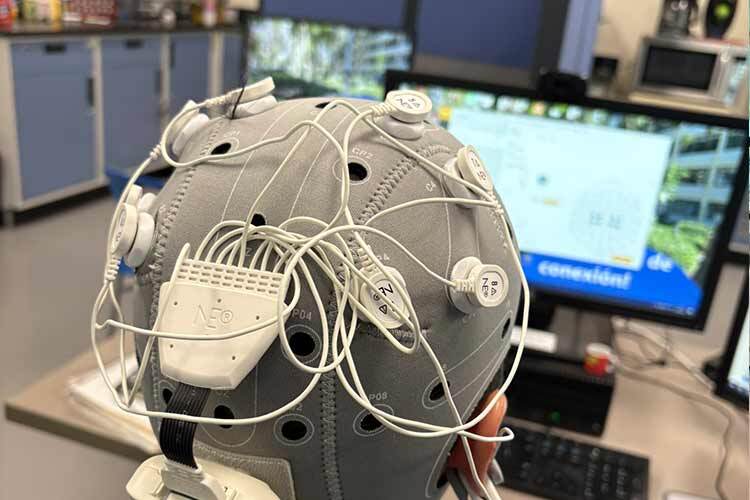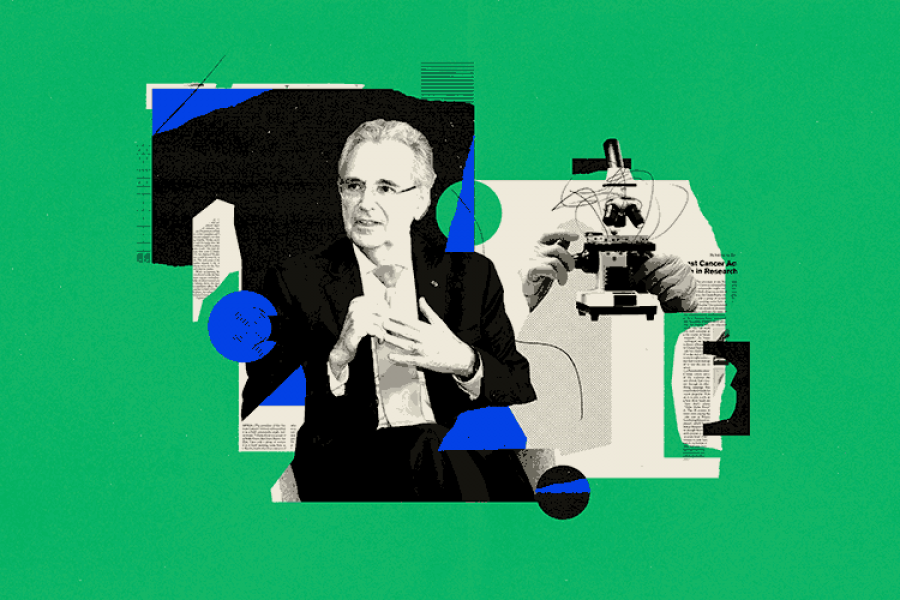“I felt my head getting very hot. Suddenly, I started feeling weak and exhausted. I stopped cooking and stepped outside, but that’s when my entire body, from my feet up, felt very hot,” recalls Ruth Montoya, 54, describing the onset of a heat stroke she suffered in April 2023, which resulted in her fainting.
Ruth, who has worked in kitchens for nearly 13 years, recognized the symptoms. When she felt nauseous again in 2024, she acted immediately to avoid a recurrence. Despite being in good health, the extreme temperatures recorded in April in Mexico City affected her daily tasks and her colleagues as well.
Exposure to extreme heat is associated with numerous negative health effects, ranging from general discomfort and headaches to heat stroke and death, according to the British medical journal The Lancet and its 2023 report for Latin America, “Lancet Countdown on health and climate change: the imperative for health-centred climate-resilient development.”
Climate change is expected to impact population health through direct consequences (such as temperature changes, increased precipitation, or extreme events) and indirect outcomes like environmental disruptions, high temperatures, climate-related infectious diseases, allergens, and food insecurity.
What Are the Health Effects of a Heatwave?
In 2023, Mexico’s Ministry of Health recorded 421 deaths due to extreme temperatures during the season from March 19 to October 7. During this period, there were three heatwaves in April, May, and June, with the June heatwave lasting 21 days.
By 2024, the country had already experienced three heatwaves: one in April and two in May. These waves resulted in 48 deaths and at least 10 cities breaking temperature records.
The public health institution documented other heat-related conditions, with a total of 615 cases of heat stroke, 313 cases of dehydration, and 28 cases of burns.
Compared to the same period in the 2023 heat season, there were only 192 cases of heat stroke and three deaths.
As climate change progresses, the frequency, intensity, and duration of heatwaves are expected to increase, putting more people at risk, according to research published in The Lancet.
How to Detect Heat Stroke
Preventing health risks involves monitoring temperature levels both indoors and outdoors, as well as humidity levels, since these conditions are not always visible or immediately apparent.
Primary symptoms indicating the onset of heat stroke include:
- Dizziness
- Headache
- Muscle pain
- Difficulty breathing
If the condition worsens, symptoms may include disorientation, nausea, vomiting, unconsciousness, and even seizures.
Heat strokes occur when there is a sudden rise in body temperature, often due to prolonged sun exposure or vigorous physical activity in hot or poorly ventilated spaces. Under these conditions, the body cannot regulate temperature through sweating.
“When the body reaches this temperature 100°F, many bodily functions start to fail, leading to the symptoms of heat stroke,” explains Emmanuel Ortiz, an emergency physician at TecSalud, in an interview with TecScience.
What to Do in Case of Heat Stroke
If any of the mentioned symptoms are detected, in addition to seeking emergency medical services, you could:
- Remove excess clothing
- Move to a cooler area
- If possible, bathe in cold water or moisten the skin and apply cool, wet compresses to key areas such as the head, neck, armpits, and groin.
Vulnerable Populations and Other Health Impacts
Ethnic and indigenous minorities, low-income communities, migrants and displaced persons, sexual and gender minorities, and pregnant women tend to be severely affected by climate-related health impacts, according to The Lancet’s 2024 report on Europe.
“Interconnected health effects tend to be unevenly distributed among populations due to differences in exposure, vulnerability, and adaptive capacity, (…) marginalization, and historical and current patterns of inequality. The most affected populations are often the least responsible and the least likely to be recognized or prioritized,” the report explains.
Pregnant women, for example, are more susceptible to heat stroke because their thermoregulation system is different, they exert more effort to breathe, and struggle more to compensate for fluid loss, Ortiz explains.
“Patients with chronic degenerative diseases may experience more complications than the general population. Those with heart disease or chronic depression may become more easily destabilized due to diuretic medications they take, or those with chronic kidney disease using hemodialysis or dialysis do not regulate their electrolytes or fluid levels in the same way,” says the emergency physician.
Health Conditions to Consider
The summer of 2022 caused over 60,000 premature heat-related deaths in Europe, despite several prevention plans being implemented, according to The Lancet report for the region.
With global warming underway, climate projections for Europe suggest a progressive reduction in cold-related deaths and a simultaneous increase in heat-related deaths, according to a 2021 study.
In Latin America, premature deaths due to air pollution alone, related to high temperatures, increased by 3.9% from 2005 to 2020. The countries with the highest figures are Chile, Peru, Brazil, Colombia, Mexico, and Paraguay.
While global measures and public policies are recommended to reduce carbon dioxide emissions and adapt cities to face constant and prolonged heatwaves with more green areas, there are also several personal or local measures recommended to prevent heat strokes, dehydration, or skin burns.
How to Reduce Health Risks with High Temperatures
Although air conditioning systems are the most common strategy to cool interiors, not everyone has access to them, and their use can worsen the situation. For example, only 16% of European households used air conditioning in 2021, producing 45 megatons of CO2 emissions, approximately the same as the emissions of Bulgaria that year.
Personal considerations include wearing light cotton clothing indoors and outdoors and regularly applying cold or wet towels.
Those outdoors should wear long, loose, light, and breathable clothing, in light colors or reflective fabrics, and even carry umbrellas, according to the study “Reducing the health effects of hot weather and heat extremes: from personal cooling strategies to green cities,” conducted by the University of Sydney.
Indoors, the use of electric fans of all kinds is recommended, considering there are no particles or gases that could cause eye or respiratory problems.
Encouraging natural ventilation of spaces and setting up outdoor areas with umbrellas or parasols is advisable. Drinking enough water, which can be iced or cold, is always an effective method.
When exercising, it is recommended to use cooling compresses or patches on the neck and avoid strenuous physical activity for more than an hour at temperatures above 35°C outdoors.
Greater vigilance should be maintained for the elderly, babies, children, or those with mental health problems or disabilities, who have more difficulty ensuring their hydration or cooling.
Be alert also at night when, despite the lack of sunlight, high temperatures persist.
Be cautious with the consumption of raw or poorly cooked foods outside the home, as they spoil more easily in high temperatures.
“Climate change is not a distant theoretical scenario: it is here, and it kills,” concludes The Lancet’s 2024 report.
Interested in this story? Want to publish it? Contact our content editor for more information at marianaleonm@tec.mx

